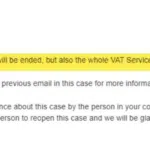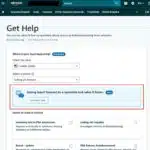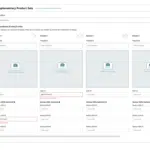Amazon PPC Pay-per-click advertising has evolved into one of the most crucial aspects of Amazon’s success, especially for sellers aiming to rank their products in a highly competitive marketplace. Unlike the early days when you could organically rank your products, now, 80% of clicks come from the first page of search results, and a significant portion of these clicks are linked to the top three products—most of which are paid advertisements. If you’re serious about staying competitive, you need to invest in PPC advertising.
This guide will provide you with a comprehensive roadmap on how to manage your PPC campaigns, boost your visibility, and maximize your return on investment (ROI). The strategies covered here will apply specifically to Amazon’s PPC model, but the underlying principles can be adapted to other platforms.
What is Amazon PPC?
PPC, or pay-per-click, is an advertising model where you pay a fee each time someone clicks on your ad. On platforms like Amazon, PPC ads are essential for getting your product in front of potential buyers. Sponsored placements on Amazon are typically displayed on the first page, ensuring greater visibility.
Why PPC is Essential for Amazon Sellers
The modern Amazon marketplace is highly competitive, and the days of achieving organic success without paid traffic are over. With 80% of all clicks occurring on the first page and 60% of those going to the top three results, your products need to appear at the top to stay competitive. In many cases, these top positions are paid placements, making PPC essential for sellers who want to maximize sales.
Founding Principles of PPC
Effective PPC management revolves around several core principles:
- Clear Strategy: Every campaign should be guided by a well-defined strategy. This includes identifying your target audience, keyword selection, and budget allocation.
- Systemized Processes: Automating or systemizing repetitive tasks helps to streamline your workflow and improve efficiency.
- Data-Driven Decisions: Regularly analyzing and interpreting data is crucial for ongoing optimization. You need to follow the numbers, not emotions.
- Focus on Profitability: The ultimate goal is not just to gain visibility but to do so in a profitable way.
The Polaris Principles of PPC
When it comes to Amazon advertising, certain best practices can help you optimize your campaigns:
- Portfolios: Organize products into portfolios, grouped by SKUs, ASINs, or product lines. This allows for easier management and clearer reporting.
- Naming Conventions: Adopt clear and descriptive naming conventions for campaigns to simplify tracking and adjustments.
- Ad Groups and Keywords: Limit ad groups to one per campaign and keep the number of keywords manageable (typically fewer than ten). Segmenting by search volume and intention is also important to ensure your campaigns are highly targeted.
Common PPC Misconceptions
There are several myths that can hurt the performance of your PPC campaigns:
- PPC is Set-and-Forget: PPC campaigns require constant optimization. Keyword bids, negative keyword management, and regular adjustments are key to maintaining a healthy campaign.
- Fixed ACOS Goals: Due to rising CPCs (cost-per-clicks) and changes in Amazon’s algorithms, maintaining the same advertising cost of sales (ACOS) year after year is unrealistic.
- Top Position = Most Profitable: While it might seem logical that being in the number one spot is the most lucrative, it’s often more cost-effective to target positions two or three due to lower CPCs.
Campaign Optimization: Turning Strategy into Action
Optimizing your PPC campaigns requires balancing bids, keywords, and ad placements. Here are several key strategies to help transcend your current campaigns:
- Bid Optimization: To effectively control your ACOS, adjust your bids based on performance data. If your goal is to lower ACOS, decrease your bids. Conversely, if you’re looking to scale and increase traffic, raise your bids.
- Search Term Negations: Implementing negative keywords can prevent your ads from showing up for irrelevant searches. This reduces wasted ad spend and increases overall campaign efficiency.
- Target Shutdown: Sometimes it’s necessary to pause or turn off underperforming ads. Metrics like excessive clicks without conversions or a high ACOS should trigger these actions.
Budget Optimization and Placement Modifiers
Budget management is critical in PPC, especially for campaigns that perform well. Here’s how you can ensure your campaigns stay optimized:
- Budget Allocation: Continuously monitor the budgets of high-performing campaigns to ensure they don’t run out of funding mid-day.
- Placement Modifiers: Amazon allows you to adjust bids based on placement. Often, top-of-search placements convert better, and you can increase your bid modifier for these placements to get more conversions without drastically increasing overall costs.
Campaign Restructuring for Optimal Performance
For underperforming campaigns, restructuring can breathe new life into your PPC efforts. Consider the following methods for reorganizing campaigns:
- Split Keywords: Campaigns with too many keywords often struggle to allocate impressions evenly, with high-traffic keywords overshadowing lower-traffic ones. Splitting these into separate ad groups or campaigns allows you to give each keyword the attention it deserves.
- Separate Match Types: Avoid mixing match types (exact, phrase, and broad) within the same campaign, as they require different bid strategies. Keep them in separate campaigns for more granular control.
Launching New Campaigns: The Right Way
When launching new campaigns, it’s critical to follow best practices:
- Existing Products: For products with historical data, use this information to set your bids and target the right keywords from the start.
- New Products: For new launches, you’ll need to start with a more conservative approach, as you won’t have conversion rate data to rely on.
Mastering Weekly and Monthly Cadence for PPC
The key to maintaining profitable campaigns is a regular optimization schedule:
- Weekly Tasks: Bid optimization, search term negations, and budget adjustments should be done at least once or twice a week.
- Monthly Tasks: Keyword research, testing new strategies, and restructuring campaigns should be performed monthly. This cadence ensures that your campaigns stay aligned with your overall business goals.
FAQs about Amazon PPC
- What is PPC in the context of Amazon? PPC (Pay-Per-Click) is a type of online advertising where you pay for each click on your ads. On Amazon, this allows you to bid on keywords so that your product appears in search results.
- What is a good ACOS for Amazon PPC? A good ACOS depends on your profit margins. A lower ACOS means you’re spending less on ads to generate sales, but the ideal ACOS varies by product and business model.
- How often should I optimize my PPC campaigns? You should perform optimizations weekly, including bid adjustments and negative keyword management, while more extensive restructuring should be done monthly.
- Should I use automatic or manual campaigns? A combination of both is usually best. Automatic campaigns are great for discovering new keywords, while manual campaigns offer more control over targeting.
- How much should I spend on PPC? Your PPC budget should align with your sales goals and profit margins. Some businesses allocate 10-30% of their sales revenue to advertising, but this can vary.
- Can I pause a PPC campaign? Yes, you can pause underperforming campaigns, especially if they exceed your budget or ACOS thresholds. However, pausing too many campaigns could reduce overall visibility.
By following these guidelines and best practices, you’ll be well on your way to mastering PPC and ensuring that your products get the visibility they need to succeed on Amazon.









